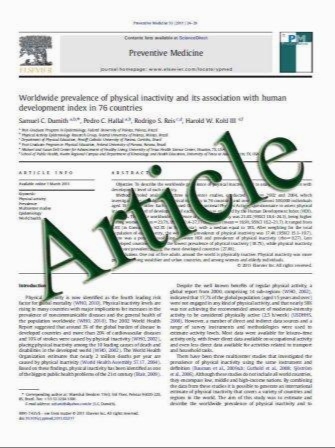Elevated TRF2 in advanced breast cancers with short telomeres
- نوع فایل : کتاب
- زبان : انگلیسی
- مؤلف : Malissa C. Diehl Michael O. Idowu Katherine N. Kimmelshue Timothy P. York Colleen K. Jackson-Cook Kristi C. Turner Shawn E. Holt Lynne W
- چاپ و سال / کشور: 2010
Description
Telomere repeat binding factor 2 (TRF2) binds directly to telomeres and preserves the structural integrity of chromosome ends. In vitro models suggest that expression of TRF2 protein increases during mammary cancer progression. However, a recent study has reported that TRF2 mRNA levels tend to be lower in clinical specimens of malignant breast tissue. Here, we conduct the first largescale investigation to assess the levels and cellular localization of the TRF2 protein in normal, pre-malignant and malignant breast tissues. Breast tissue arrays, containing normal, ductal carcinoma in situ (DCIS) and invasive carcinoma specimens, were used to assess the expression and localization of TRF2 protein. Telomere lengths were semi-quantitatively measured using a pantelomeric peptide nucleic acid probe. A mixed effects modeling approach was used to assess the relationship between TRF2 expression and telomeric signal scores across disease states or clinical staging. We demonstrate that TRF2 is exclusively nuclear with a trend toward lower expression with increased malignancy. More case-to-case variability of TRF2 immunostaining intensity was noted amongst the invasive carcinomas than the other disease groups. Invasive carcinomas also displayed variable telomere lengths while telomeres in normal mammary epithelium were generally longer. Statistical analyses revealed that increased TRF2 immunostaining intensity in invasive carcinomas is associated with shorter telomeres and shorter telomeres correlate with a higher TNM stage. All immortalized and cancer cell lines within the array displayed strong, nuclear TRF2 expression. Our data indicate that elevated expression of TRF2 is not a frequent occurrence during the transformation of breast cancer cells in vivo, but higher levels of this telomere-binding protein may be important for protecting advanced cancer cells with critically short telomeres. Our findings also reinforce the concept that serially propagated cancer cells, although tumor-derived, may not model all types of authentic tumors especially those demonstrating genetic heterogeneity.
Breast Cancer Res Treat (2011) 127:623–630 Received: 16 February 2010 / Accepted: 5 June 2010 / Published online: 13 July 2010 Springer Science+Business Media, LLC. 2010


